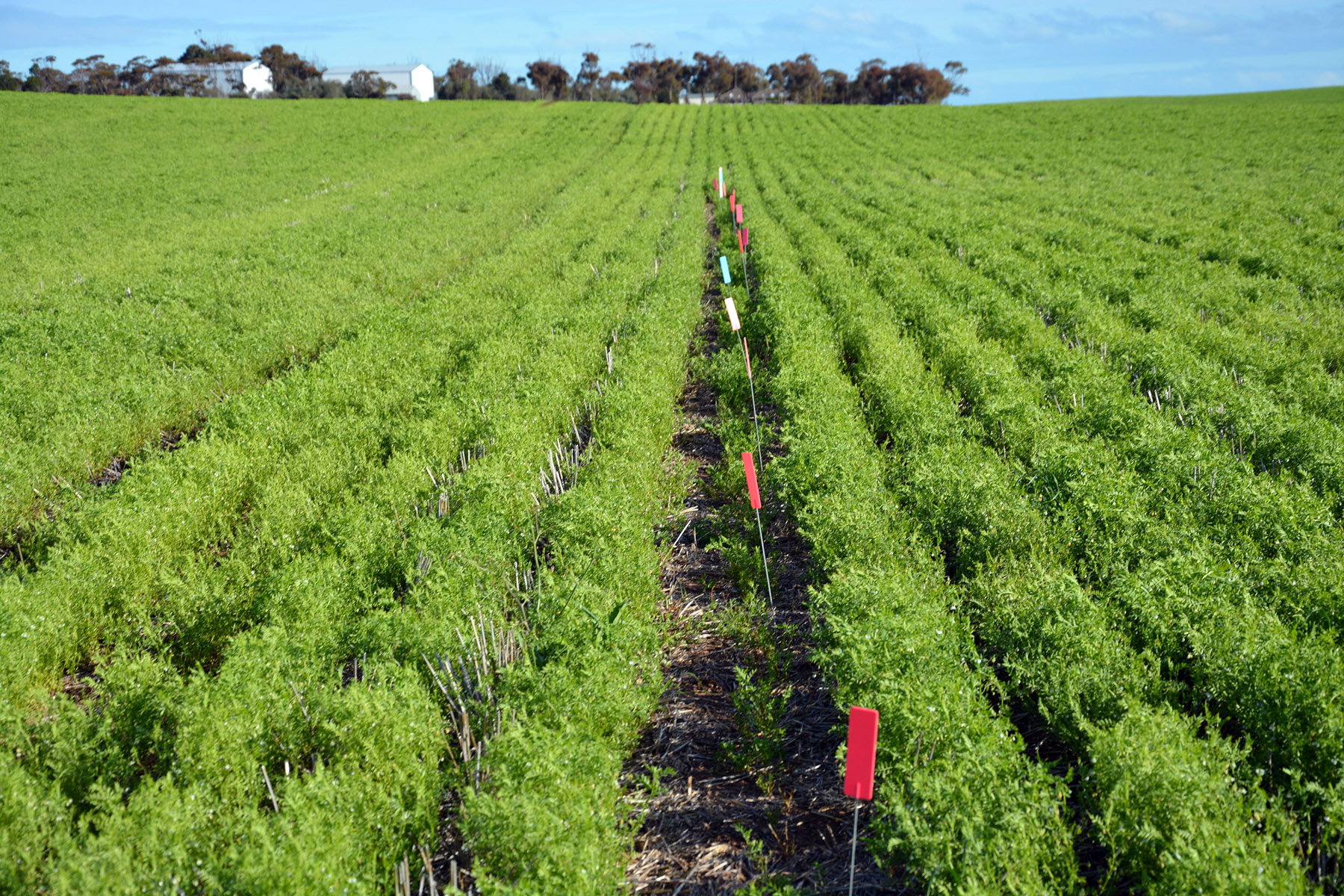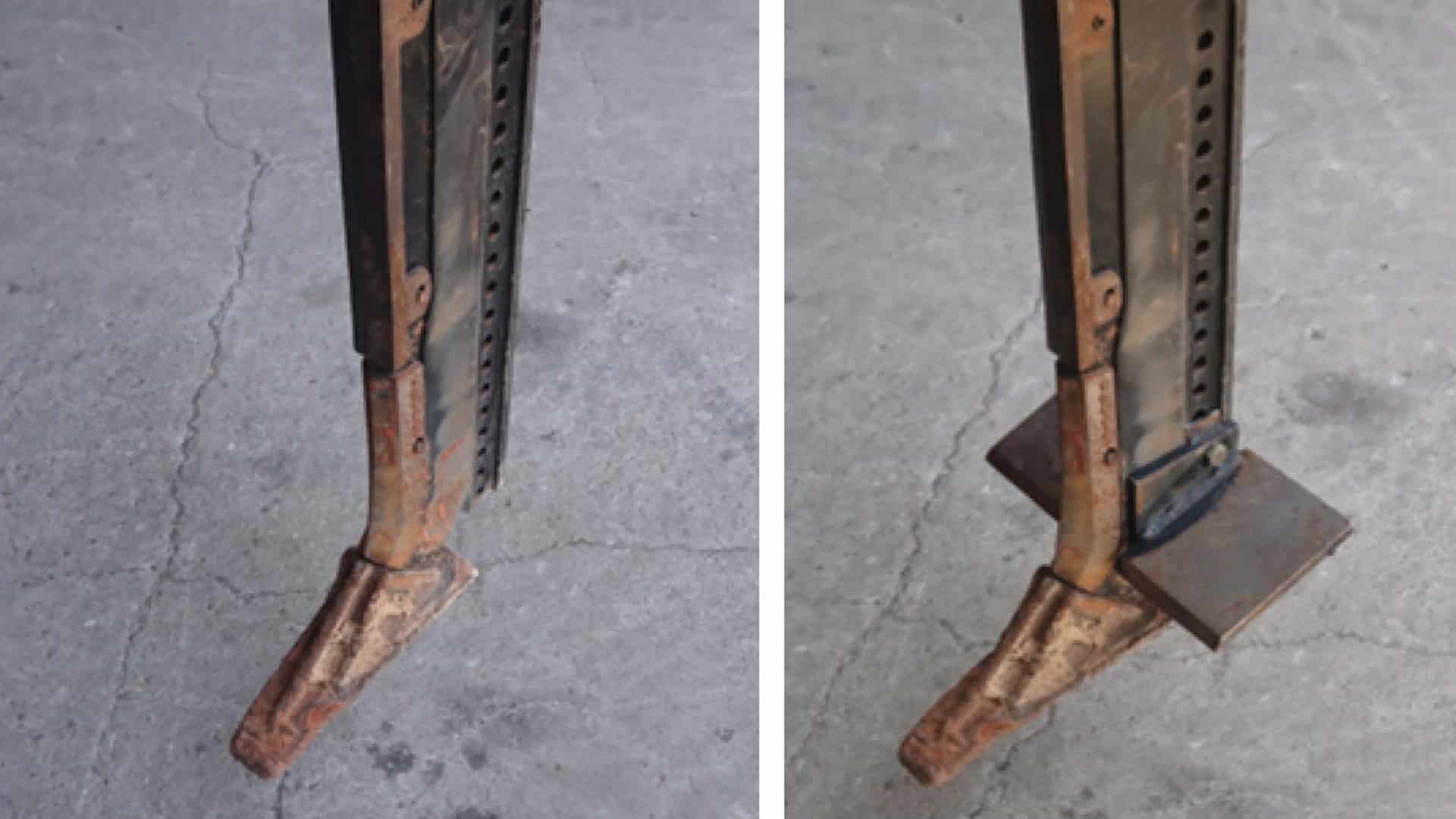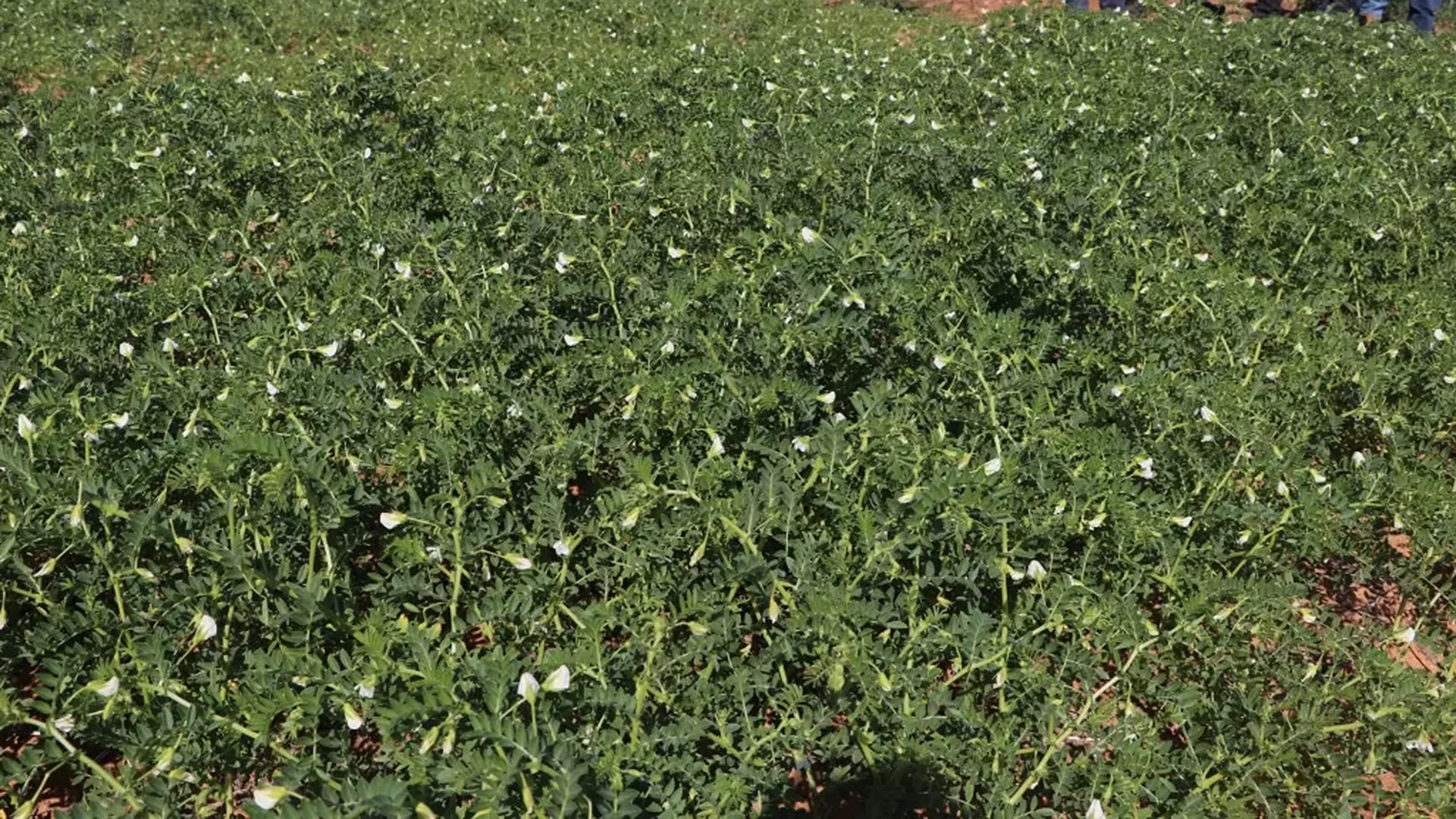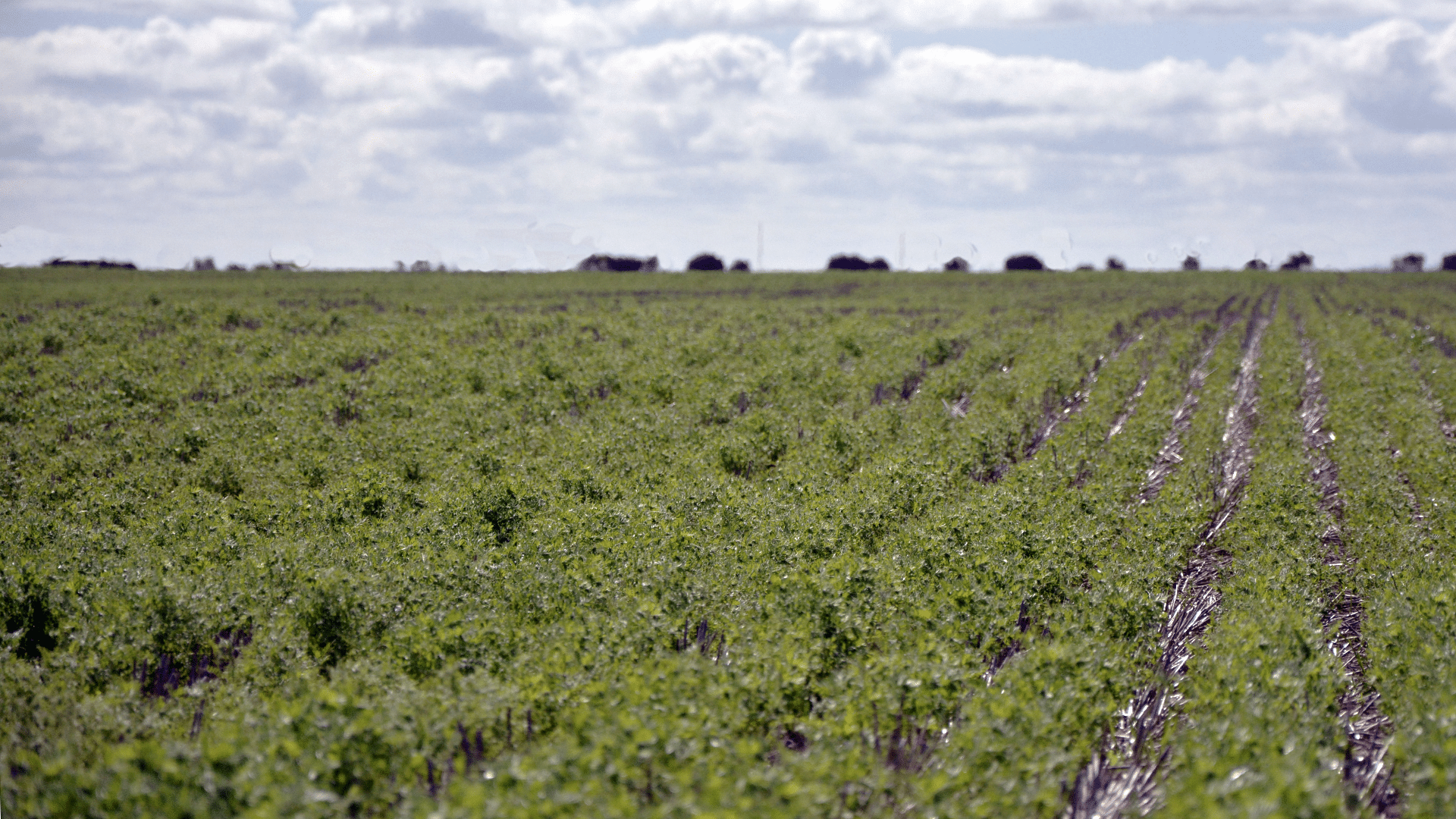START
FINISH
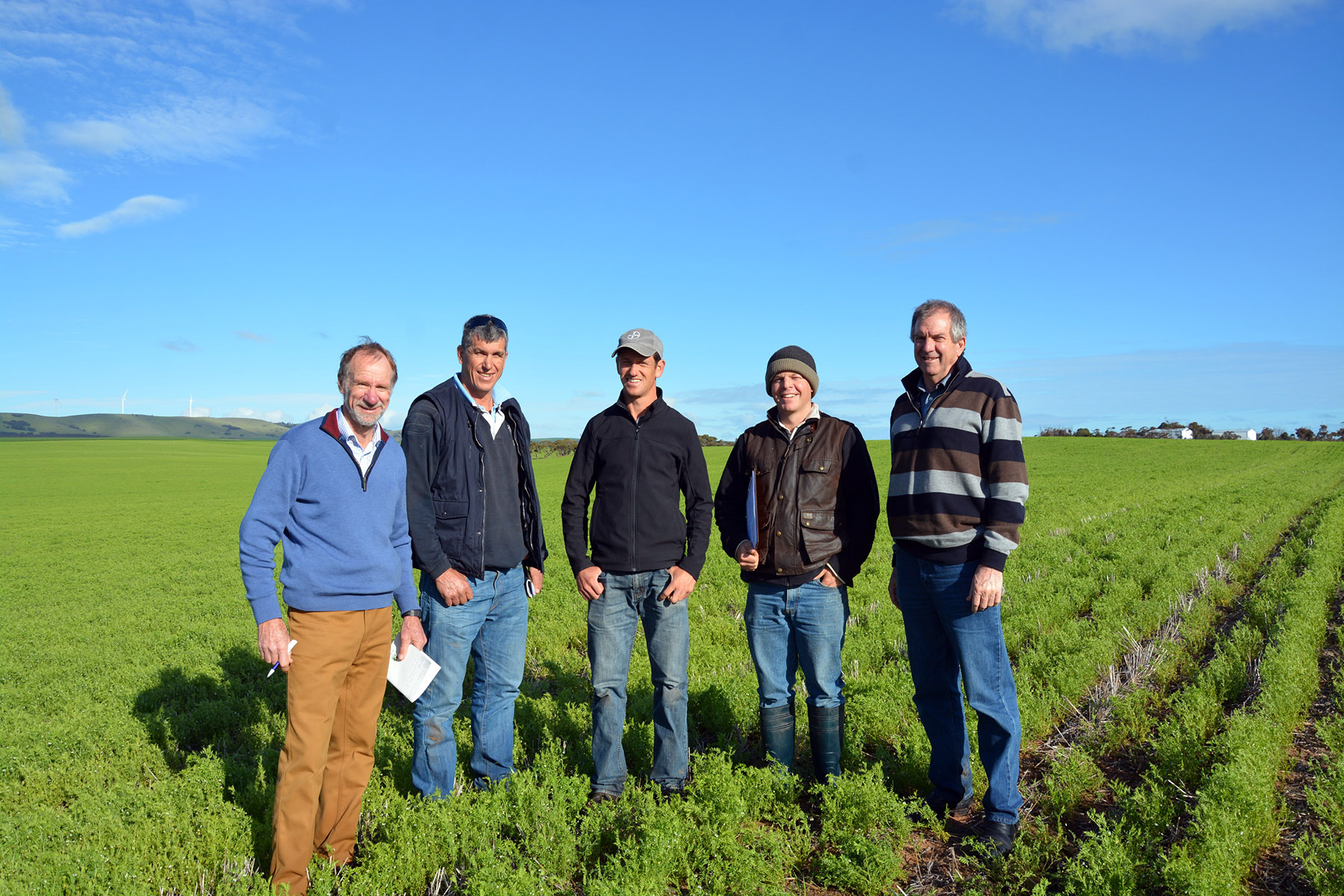
Summary
The Yorke Peninsula has significant areas of sandy soil on which lentils underperform when grown as part of a rotation. This project identified common constraints to yield potential such as soil compaction, nutrition and soil acidity.
Addressing soil compaction with deep ripping was effective in increasing yields. There were further increases in yield achieved when applying chicken litter, as opposed to synthetic fertiliser. Further investigation aims to understand this difference in response, with molybdenum nutrition implicated. Some herbicide combinations were also shown to have a large negative impact on grain yield.
Background
Lentils are often used as part of a crop rotation on the sandy soils of the Yorke Peninsula however they are estimated to be performing below potential. A conservative estimate suggested lentils were yielding 0.53 tonnes per hectare (t/ha) below potential. Results from this research indicate that 0.8-1.0 t/ha is a more accurate estimate of lentil yield gap on these constrained sands. Understanding the causes of low performance and identifying cost-effective methods to boost productivity is of huge benefit to growers.
Research Aims
The core objectives of the project were to:
• Identify the constraints limiting productive capacity of lentils on dune and swale soils.
• Develop trials to investigate cost-effective management options for the identified constraints and allow the crops to realise their water limited yield potential.
In The Field
Paddock surveys and transect analysis were conducted between 2016 and 2018 to discover the constraints affecting lentil production on the Yorke Peninsula.
Paddock surveys conducted in 2016 highlighted that soil compaction was widespread and most severe on the sandier soils in the survey paddocks.
Field trials were conducted in identified problem areas between 2017 and 2018. They were designed to address issues identified in the paddock surveys including soil compaction, nutrition and soil acidity.
Results
A trend between increased biomass in September and final grain yield suggests crops are biomass-constrained when grown on sandy areas and any treatment providing growth response will usually translate into yield.
Addressing soil compaction with deep ripping demonstrated a 0.8 t/ha (200 percent) yield increase in one trial. This response increased to a 1.3t/ha (325 percent) yield increase when ripping was combined with the use of chicken litter.
Lentils grown on sandy soils are particularly high risk for herbicide damage from commonly used group C and B herbicides. Using combinations of herbicide can cause cumulative crop damage.
In some cases, herbicides with reasonable crop safety when singularly applied can have a significant effect when applied in combination. Commonly used group C and B herbicides in combination reduced grain yield by 0.9t/ha (61 percent) in one trial.
The two nutrition trials did not show general yield responses to various nutrient treatments on alkaline sandy soils. However, the response to molybdenum on acidic sands requires further investigation.
There were indications more vigorous and higher biomass lentil varieties perform relatively better on sandy soils than on heavier textured soils.
Project Participants
Trengove Consulting: Sam Trengove, Stuart Sherriff.
The Problem
Lentil production often underperforms on the sandy soils of the Yorke Peninsula.
The research
Identifies constraints to lentil productivity on dune and swale soils of the Yorke Peninsula.
More information
Sam Trengove, Trengove Consulting
M: 0428 262 057
E: [email protected]
Value for Growers
The findings significant to growers and are applicable outside the Yorke Peninsula region and are also of use to growers in areas with similar sandy soils such as the Eyre Peninsula, Mallee, Mid North and Lower North.
Results were communicated to growers during the project. In 2017 this included at the Northern Sustainable Soils’ (NSS) pre-season meeting in March, winter field day in July and spring field day in October as well as the Hart Field Site young farmers bus tour in September and a Landmark Cummins bus tour in October.
In 2018, it was included at the Independent Ag Consultants meeting in January, the GRDC Adviser Updates in February and at trial site visits including the NSS crop walk, EP Pulse Check groups, Mallala Ag Bureau, Landmark client crop walk and SARDI agronomists.
Information was communicated through Twitter, the Trengove Consulting and Hooper Consulting newsletter, NSS results booklet and EP Arable Research Foundation compendium.
Findings from the project were also shared and discussed with researchers involved in GRDC’s Southern Region Sandy Soil project.

